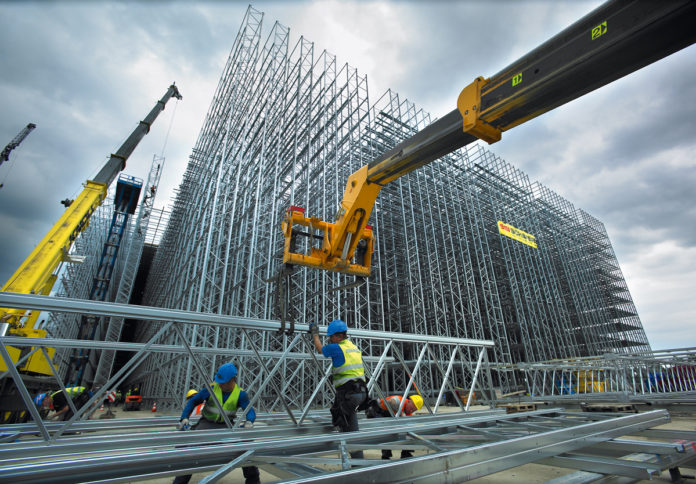By Press
18 January 2017

The construction industry has proved ripe for disruption by drone technology. The reasons for this can be difficult to pick apart. An important factor is that the business of construction—both commercial and residential—is highly complex and involves many skilled workers involved at different phases. Each of these phases can be broken down further into niche tasks, each requiring safety oversight, monitoring, and data collection. The result is a long, expensive, complicated process, with many opportunities for increased efficiency.
Early adopters of drone technology saw opportunities to make money by offering ways to make old processes faster, cheaper, and simpler—but they often focused on just one or two uses cases. For construction and engineering firms, there are likely dozens of ways to use drones in order to maximise your investment and run more efficiently and safely.
In this article, I’ll focus on ways that drones can be used in the design, building, and marketing phases of a construction project.
Using Drones in Design & Engineering
The planning, surveying, architecture, and engineering that go into shaping what eventually become a construction job all rely on good data. Using drones to capture images of the land is only the beginning of the value that they can offer a construction firm. By gathering that raw sensor data and feeding it into software like Skycatch, DroneDeploy, or InfraWorks, you have created value that can be packaged and sold under various pricing structures.
Though these applications are powerful, they cannot fully replace surveying. But by combining drone data and standard surveying tools, you can offer clients a wider range of services, such as the ability to measure how much cut and fill they will need in order to make the ground level enough to build upon.
Or you can create a 3D rendering of the site, and then create a layer for each stage of building, show how the project will progress and helping to identify potential problems. Without drones, these tasks might require hiring a plane or helicopter, as well as a staff of data scientists. Drones provide the opportunity to offer these services at a more competitive rate, and with the bonus of gathering the data safely. And speaking of safety.
Drones on the Construction Site
Imagine your client needs to inspect the welding on the thirteenth floor of a structure. They could hire a crane and send personnel up there, or they could fly a UAV and accomplish the same goal cheaper and faster without the risk of having a person working at height, no matter how mitigated that risk might be.
As a bonus, a supervisor or engineer on the ground can receive HD footage in real time, which would not be possible with a human worker. This example is, in miniature, why drones have been so readily embraced by the construction industry. Here are a few other use cases for drones on the construction site.
Time Lapses: You can use drones to take weekly images of the structure, and then stitch them together into a time-lapse video. This can help in coordinating logistics among the many parties involved, while also updating remote stakeholders about the progress. Many executives would be willing to pay for an easier way to visualise their daily ops.
Job Site Monitoring: There is huge potential here. As it stands, flying a UAV over people is not allowed without a permit, but the FAA works with applicants who are willing to prove their processes are safe (and who have proper liability insurance). You can sell clients on cutting down waste and improving the security and safety of their projects.
Thermal Imaging: Drones can be outfitted with a wide array of sensors that can see far beyond what the naked eye allows. When a building is close to completion, a drone with a thermal sensor can fly overhead and identify cold and hot spots, areas that might either need additional HVAC infrastructure or could pose risks of electrical fire.
These are only a few use cases, and many more applications are in development or already in use.
Using Drones for Marketing
Of course, aerial photography and video for residential and commercial real estate marketing are one of the best-known applications for drones today. Rather than hiring a crane or helicopter, many firms are choosing to spend far less by hiring a drone with a high-quality camera and a capable pilot. The results speak for themselves. With a drone, you can achieve unusual angles, take a greater number of photographs, and achieve results that would otherwise be impractical or impossible. This creates a competitive advantage when it comes to promotional photography.
Here’s another exciting use case in the realm of marketing: a drone can take photos showing what the view will look like from any given office – even before that office is built. By pinpointing the position and elevation of a space, a drone can fly to those coordinates and snap a picture. This is unfeasible with older technologies, and serves to get the wheels of commerce spinning at an earlier stage.
These are just a handful of ways that you can harness drones to generate income for your construction firm. As time goes on, the number of companies that embrace this technology will grow as they see the rewards being reaped by early adopters. If you’re interested in incorporating drones into your construction business, read our earlier article on some of the challenges you might face and how to avoid them.
Annie Norris Skyward Drone Ops Consultant Skyward
https://www.suasnews.com/2017/01/drones-helping-construction-companies-make-save-money/
No comments:
Post a Comment